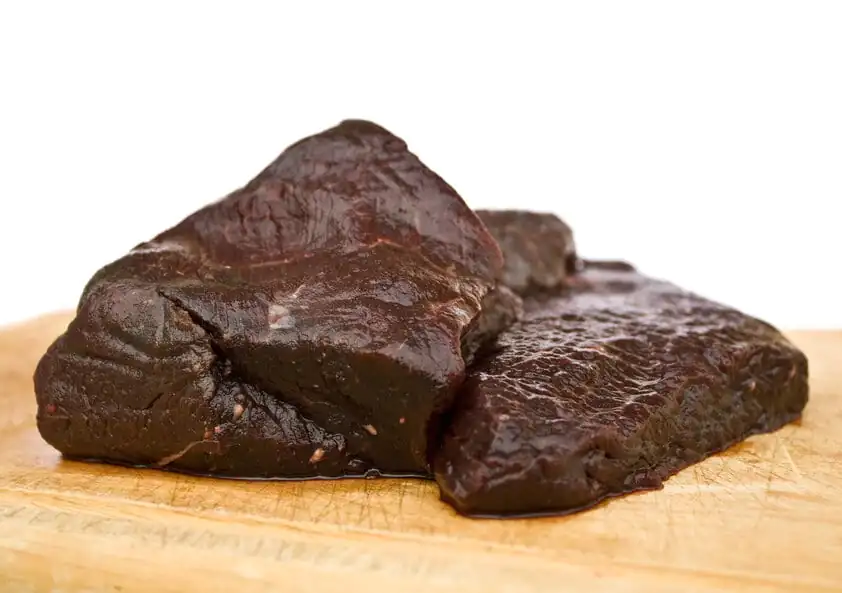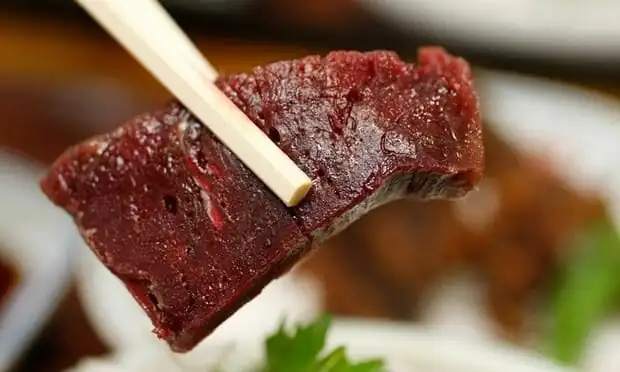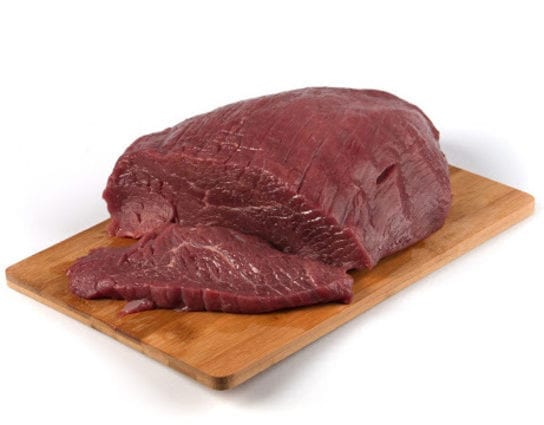Contents
Description
In post-war Japan, whale meat was considered the main protein food, but the ban on whaling turned it into a rare delicacy found only in specialty stores.
According to historical data, as early as 800 AD, there was an active hunt for whales in Europe. Its main target was blubber (whale fat), but meat began to be of interest only in the 20th century. Due to large-scale whaling, the number of whales gradually decreased, eventually dropping to a critical level.
Due to the fact that a ban on commercial fishing was adopted at the end of the last century, the situation has improved slightly. But today some species of these mammals are on the verge of extinction. Among them are the gray whale, the large bowhead, and the blue whale.
In addition, the state of the environment also raises concerns. Environmental pollution leads to the fact that a lot of mercury accumulates in the liver of whales and dolphins.
Studies have shown that the content of mercury in the liver of whales exceeds the established norms by almost 900 times. At this concentration, a 60-year-old who ate 0.15 grams of liver would exceed the WHO’s weekly mercury intake.
So you can easily get poisoned. In the lungs and kidneys of whales, the mercury content also exceeds the norm – by about 2 orders of magnitude. This was the reason that the consumption of by-products of these mammals was banned. At the same time, the demand for whale meat is still unabated. Historically, representatives of northern peoples have been consumers of whale meat. Norway and Japan are now leading consumers of this product.

Calorie content and nutritional value of whale meat
- The calorie content of whale meat is 119 kcal.
- proteins – 22.5 g,
- fats – 3.2 g,
- carbohydrates – 0 g
Types and varieties
The most common type of whale entering the market is the minke whale. It is mined in significant quantities. Sometimes a mustachioed whale hits the shelves. It is a traditional fishery in some whaling countries, however, today this species is endangered.
Scientists from Harvard conducted a study of whale meat in the Japanese market in 1998-1999 and found that the product was largely a mixture of minke whales, dolphins and porpoises. Endangered species such as the humpback whale or fin whale have also appeared on the shelves.
Today, the product can be bought in specialized Japanese stores labeled “Kujira” (meaning whale), as well as in some supermarkets, where it is labeled “whale bacon” or “Sashimi”. In Norway, whale meat is sold smoked or fresh. It can be purchased in the city of Bergen.
The most valuable part of the carcass is the whale’s fin. It is believed that near him the best quality meat. Culinary experts also appreciate the tail of the carcass.
Taste qualities

Whale meat is similar in nutritional characteristics to beef or elk. It tastes like fish liver and has a distinct fishy aroma. Whale meat is much more tender, easier to digest, less fatty than meat from cattle.
Beneficial features
A product such as whale meat has always been considered useful and valuable for the human diet. It was salted, canned, prepared in various other ways.
The delicacy contains a decent list of the vitamin table: C, B2, B1, PP, A, E and minerals – calcium, iron, potassium, magnesium, phosphorus, sodium. The product contains fatty acids that are beneficial to health.
Whale meat is well digestible, contains a lot of vitamin A. Nutritionally comparable to beef, contains a large amount of protein, has a beneficial effect on the nervous system, stabilizes sugar levels, and stimulates digestion.
It is known that individuals from Japan and the Faroe Islands contain high levels of mercury, which accumulates mainly in the lungs, liver and kidneys of a whale, but can also be found in meat.
Cooking applications

In cooking, mainly fillets are used, as well as the liver, heart, kidneys and intestines of a whale. Meat is used to make stews, salads, sausages, pie filling, jellied meat, minced meat for meatballs, soups, main courses.
How to cook a whale?
- Fry steaks with salt and pepper.
- Prepare Hari Hari Nabe (mushroom stew).
- Make a hamburger with grilled whale meat.
- Fry in batter.
- Cook the Miso soup.
- Stew with broth and vegetables.
- Prepare Blubber with salted whale meat.
Norwegians make steaks with parsley and bell peppers from whale meat or stew in pots in broth with potatoes. Alaska Natives have used it as an important food source for thousands of years. They consider the fat tail the best part of the carcass.
The people of the Faroe Islands have hunted whales since the first Norwegian settlements. The natives boil it or eat it fresh, serve it like a steak, salt it and boil it with potatoes. The Japanese cook “Sashimi” or “Taki” from the tail of the carcass, make hamburgers, and also dry meat like beef.
The harm of whale meat

Whale meat itself does not contain dangerous components, but its quality is significantly affected by the conditions in which whales live. Due to environmental pollution, leading to an increase in toxic substances that are oversaturated in the seas, the meat of these animals is impregnated with various chemicals
It is now known for certain that the internal organs of whales contain dangerously high concentrations of mercury, which, if used constantly, can pose serious health problems. The acute intoxication that can be obtained from eating the liver of this animal is incompatible with life.
Whale steak with vegetables

Ingredients
- 2 kg of whale meat.
- 400 ml of red wine.
- 200 ml of water.
- 15 juniper berries.
- 2 dessert spoons of blackcurrant liqueur.
- Cream.
- Corn flour.
Preparation
- In a saucepan, brown the meat on all sides, add red wine, water and crushed juniper berries.
- Cover and cook over low heat for about 30 minutes.
- Remove the meat and wrap in aluminum foil; Continue to cook the gravy, adding liqueur, cream to taste, and thickening agent to the saucepan.
- Cut the meat into thin slices and serve with gravy, potatoes, green peas, Brussels sprouts and lingonberries.











Hello there! This post could not be written any better!
Looking at this post reminds me of my previous roommate!
He continually kept talking about this. I will send this article to him.
Fairly certain he will have a great read. I appreciate you
for sharing!